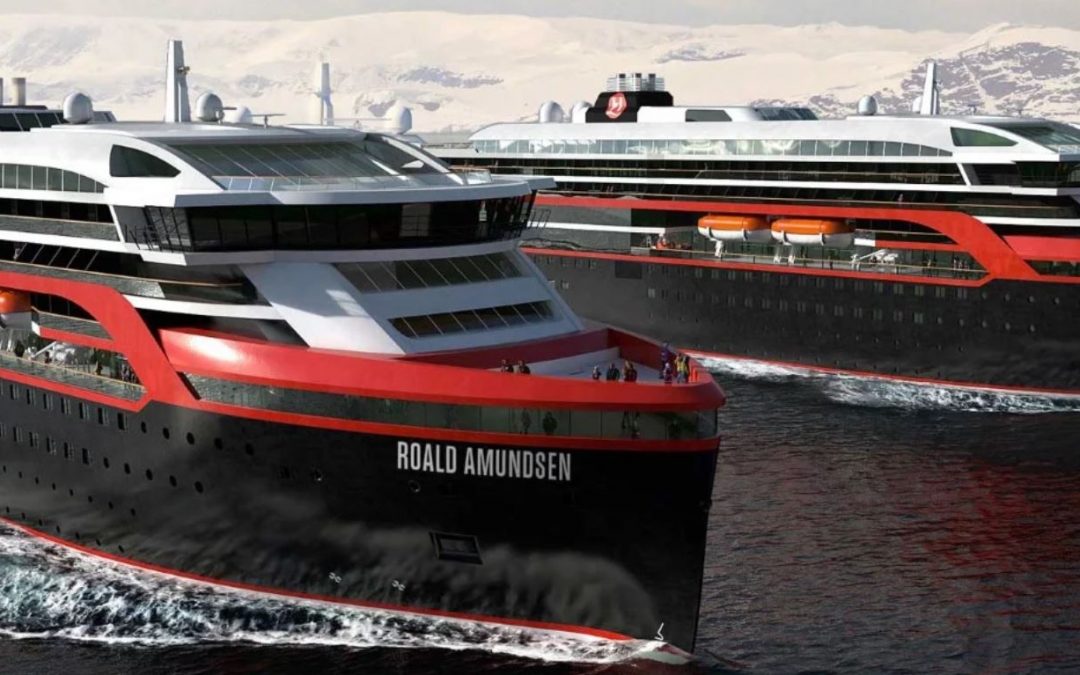Hurtigruten is introducing MS Roald Amundsen and MS Fridtjof Nansen, leading the way towards emission-free cruise and shipping.
Tourism is an essential part of many local and national economies, as well as an enriching experience for the individual. But growing numbers of tourists worldwide bring with them increased climate impact and strain on local ecosystems.
To uphold a responsible tourism industry, electrification of sea and road transport will be one of several essential measures. Demonstrating successful electrification on a large scale could also pave the way for low-emission transport alternatives more broadly – especially within shipping.
Low-emission cruise tourism
Hurtigruten is launching MS Roald Amundsen, the first of a series of hybrid-battery powered expedition cruise ships. A sister ship, MS Fridtjof Nansen, is currently under construction at Norway’s Kleven Yard, and will be introduced in 2020. A third ship is planned for 2021.
Hurtigruten’s ground-breaking ships employ the same hybrid technology, which – combined with increased fuel efficiency and other green technology – will reduce fuel consumption and carbon emissions by more than 20 per cent. The powerful battery packs will allow the vessels to operate entirely emission-free during short periods of time, with room set aside to expand battery capacity and add new technology.
On top of the hybrid technology, the ships are designed to let guests travel as sustainably as possible to some of the world’s most spectacular destinations, such as Antarctica, South America, the Caribbean, Greenland, Svalbard and the Norwegian coast. They feature no single-use plastic, improved waste management and recycling, and custom-built expedition equipment, including a fleet of Blueye underwater drones.
Read the whole article by The Explorer in The world’s first hybrid cruise ships.
